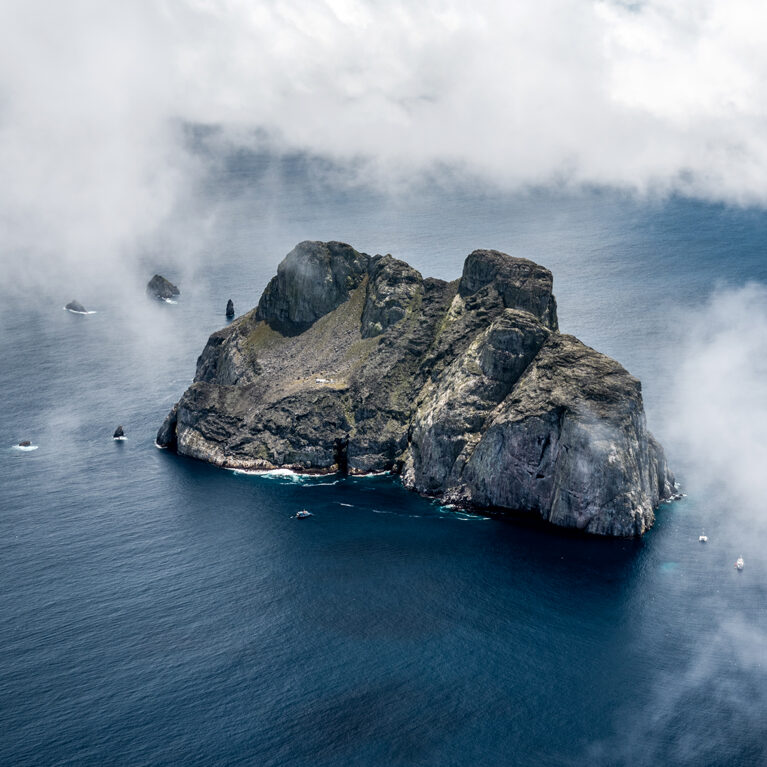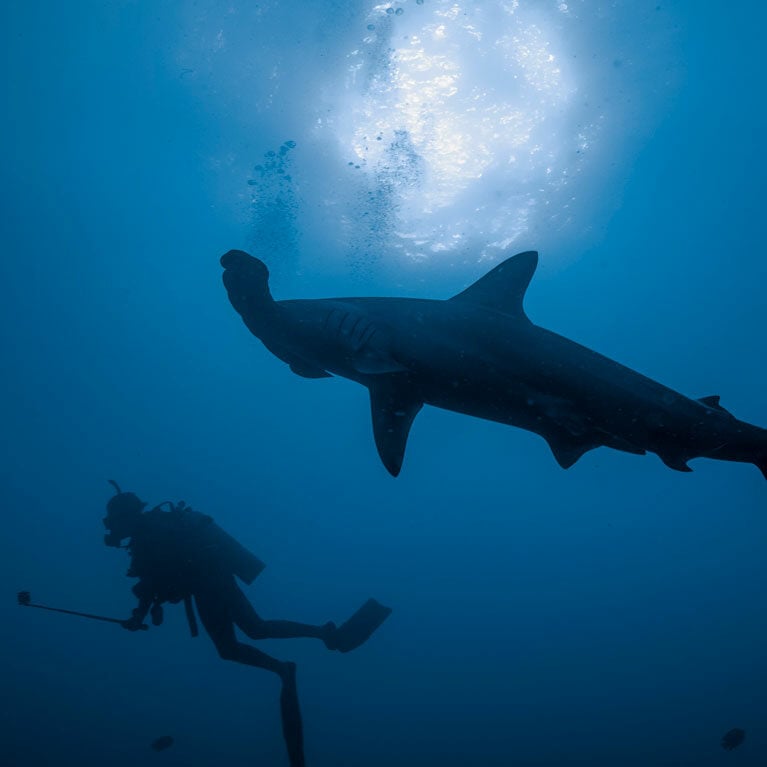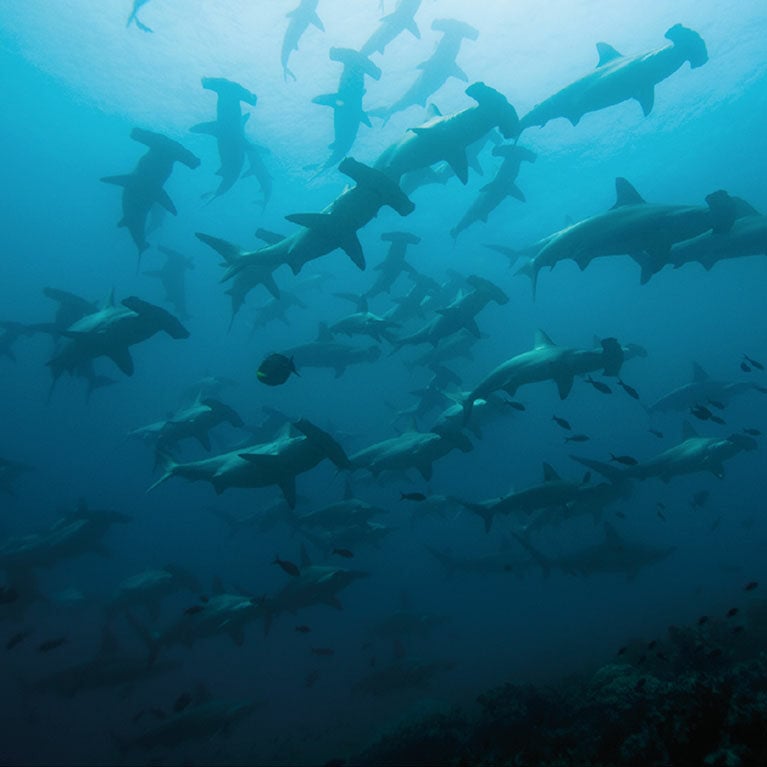Documenting biodiversity in Colombia’s Malpelo MPA
Sandra is using multiple methods to characterise the shark communities in Colombia’s Malpelo Fauna and Flora Sanctuary. Using a combination of baited remote underwater video systems (BRUVs), underwater visual census (UVC) done on scuba dives, remotely operated vehicle (ROV) dives and tracking information downloaded from acoustic telemetry receivers, she hopes to improve the kind of information available about sharks and rays in this marine protected area in the Colombian Pacific Ocean. Her work will help detail population trends, current threats and species composition in the region. The project will hopefully strengthen research and monitoring at Malpelo.
I am a naturalist, environmentalist and conservationist with a Master’s degree in earth and life sciences from the École Pratique des Hautes Études in Perpignan, France. I am also a professional diver with more than 7,000 dives around the world to my name. I have committed my career to the conservation of marine biodiversity and to respecting the environment.
I actively promoted the designation of the Malpelo Island Fauna and Flora Sanctuary, off the Pacific coast of Colombia, as a marine protected area in 1995. Three years later I was asked to manage it, with a view to reinforcing...



Monitoring and research at Malpelo Fauna and Flora Sanctuary for conservation management
To strengthen research and monitoring at Malpelo Fauna and Flora Sanctuary in order to protect its biodiversity.
Research at Malpelo is needed to evaluate the population trends, abundance and species composition of sharks and fish within the sanctuary and to identify threats to them. Keeping a record of these data enables us to measure whether, and to what extent, the conservation actions we have taken are effective.
The Eastern Tropical Pacific is an area of more than 20,000 square kilometres (7,720 square miles) shared between the exclusive economic zones of Colombia, Ecuador, Panama and Costa Rica and the international waters between them. Within this region there are oceanic islands of great biological relevance around which marine protected areas have been declared. Among these, Cocos National Park (Costa Rica), the Galápagos Marine Reserve (Ecuador), the Coiba National Park (Panama) and the Malpelo Fauna and Flora Sanctuary stand out. Previous studies have suggested that these islands share multiple species of sharks and turtles, such as the scalloped hammerhead shark, the whale shark and green and leatherback turtles.
The Colombian Pacific faces the consequences of harmful anthropogenic activities such as overfishing, mining and plastic pollution. At Malpelo in particular, a decline in the abundance of most of the species assessed (bluefin trevally, longfin yellowtail, yellowfin tuna, leather bass, sailfin grouper, spotted eagle ray, silky shark, Galápagos shark, whitetip reef shark, whale shark and scalloped hammerhead shark) has been observed. The scalloped hammerhead, in fact, decreased by 73.3% between 2009 and 2019. However, no significant variation in the relative abundance of spotted eagle rays and whitetip reef sharks was recorded. These two species apparently spend their entire life cycle in the sanctuary. These results suggest that conservation measures taken so far have been effective, but at the same time that the marine protected area is suffering the consequences of what is happening outside its limits.
- To carry out an expedition to the Malpelo Island Fauna and Flora Sanctuary.
- To deploy at least once a day a baited remote underwater video (BRUV) at Malpelo and record species, number of individuals, date and time.
- To download the acoustic data from three receivers installed at Malpelo and analyse patterns of residency.
- To carry out 20 underwater visual censuses and compare them to previous data to estimate population trends for some species earmarked for conservation (bluefin trevally, longfin yellowtail, yellowfin tuna, leather bass, sailfin grouper, spotted eagle ray, silky shark, Galápagos shark, whitetip reef shark, whale shark and scalloped hammerhead shark).
- To explore different diving sites around Malpelo to depths of 100–150 metres (330–500 feet) using a remotely operated vehicle to collect video and photographic material and record species or genus, date, time and coordinates.
- To register marine mammals, seabirds, fish and turtles seen on the voyages between Buenaventura and Malpelo.
Public presentation at MODS: Save Our Seas Distinguished Speaker Series: Documenting Shark Communities

